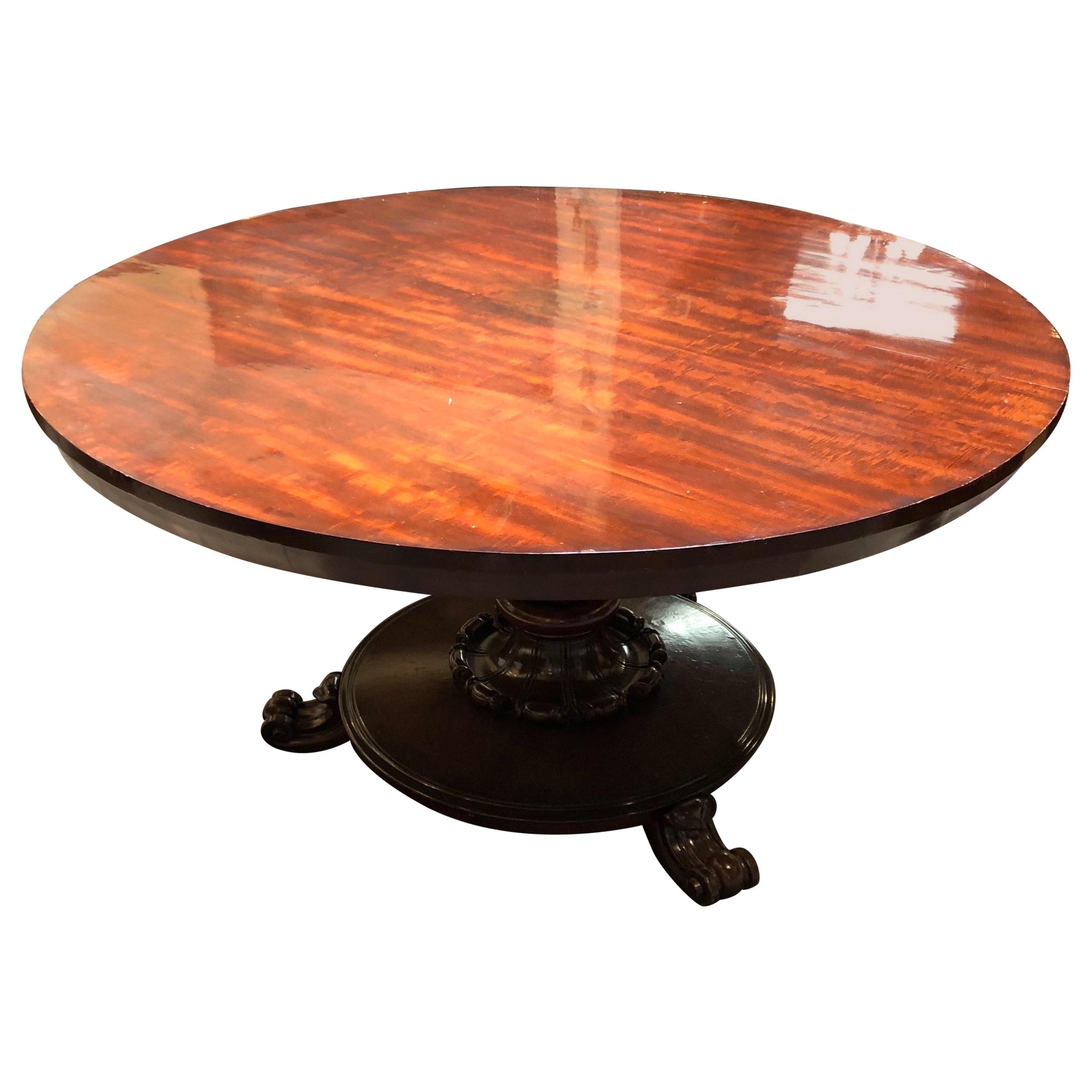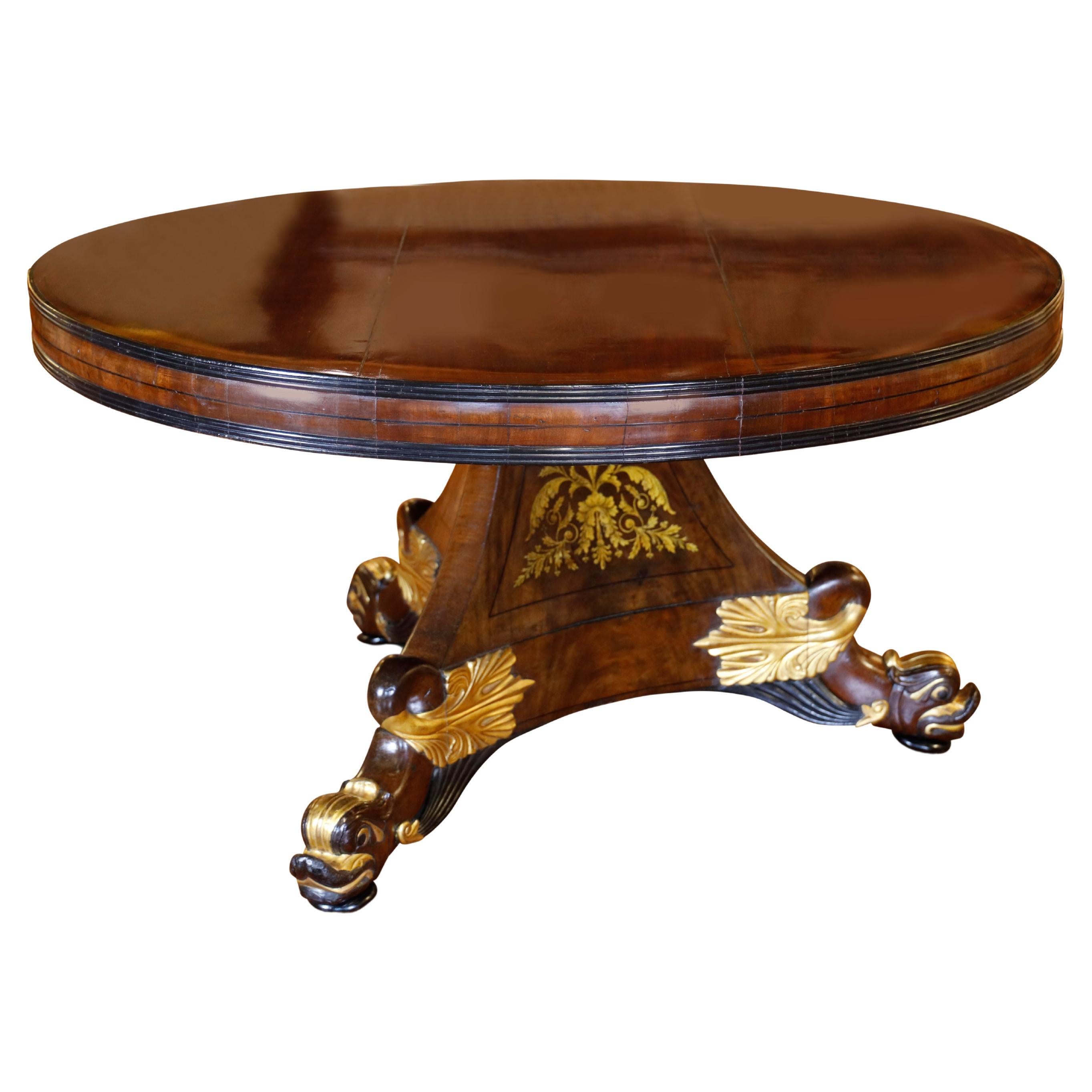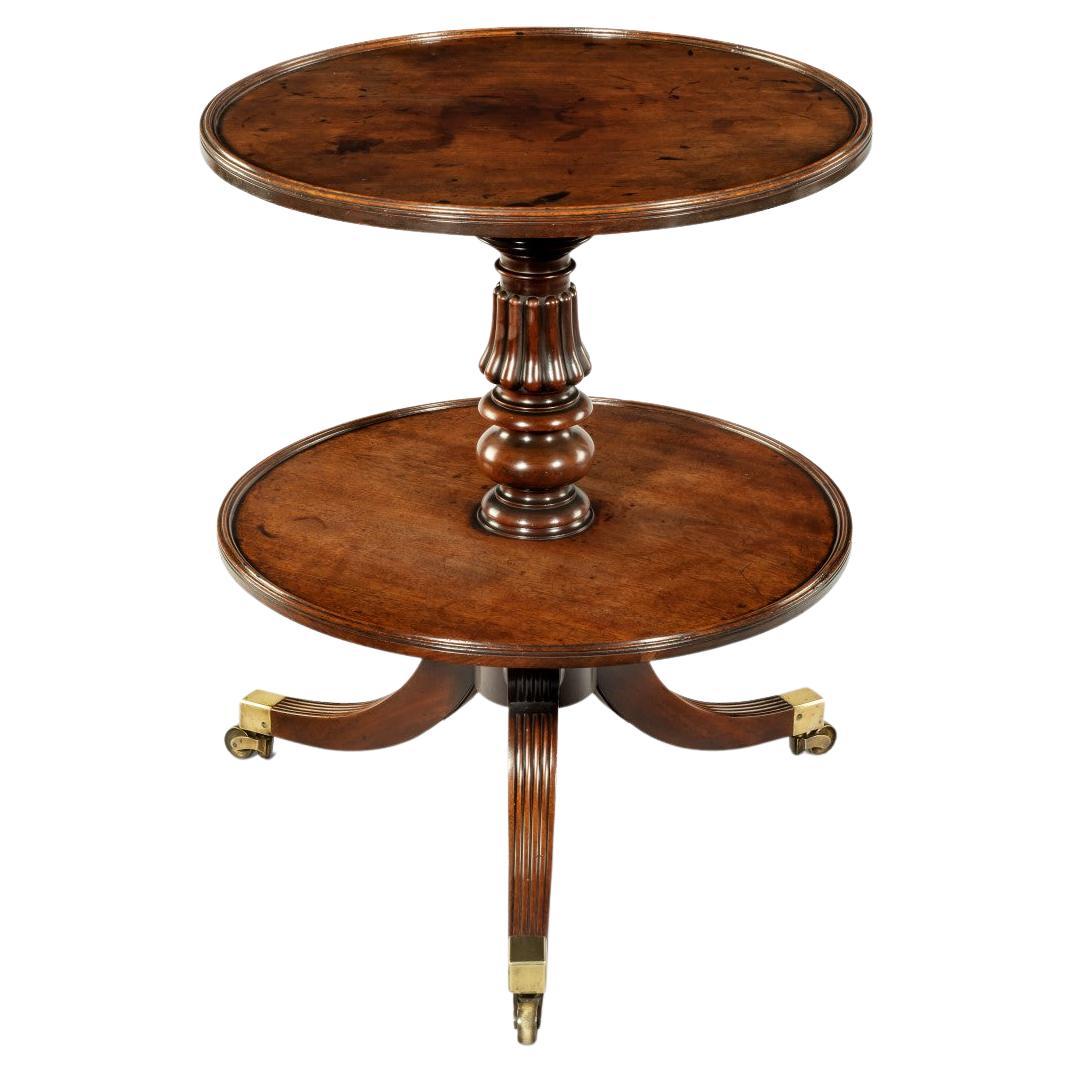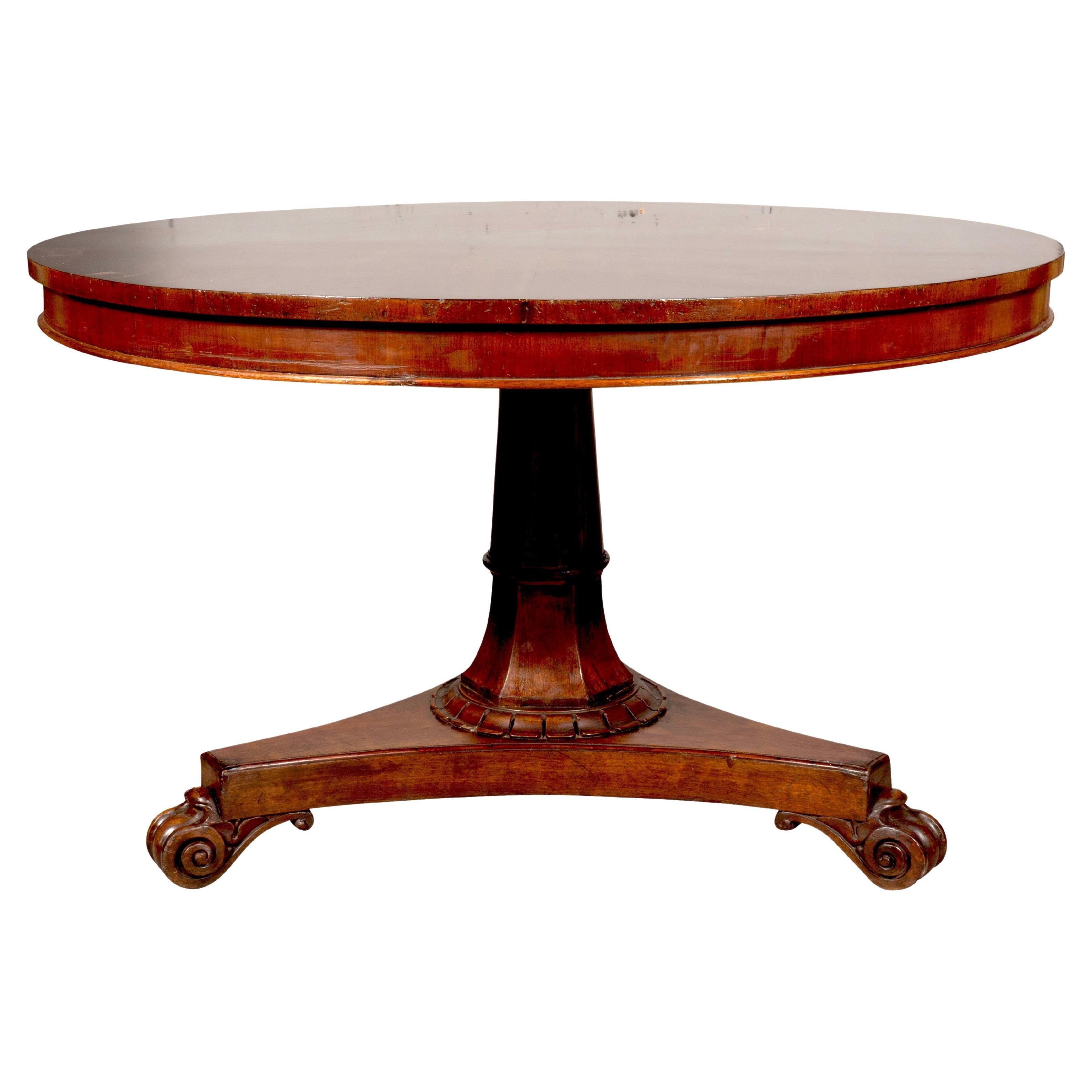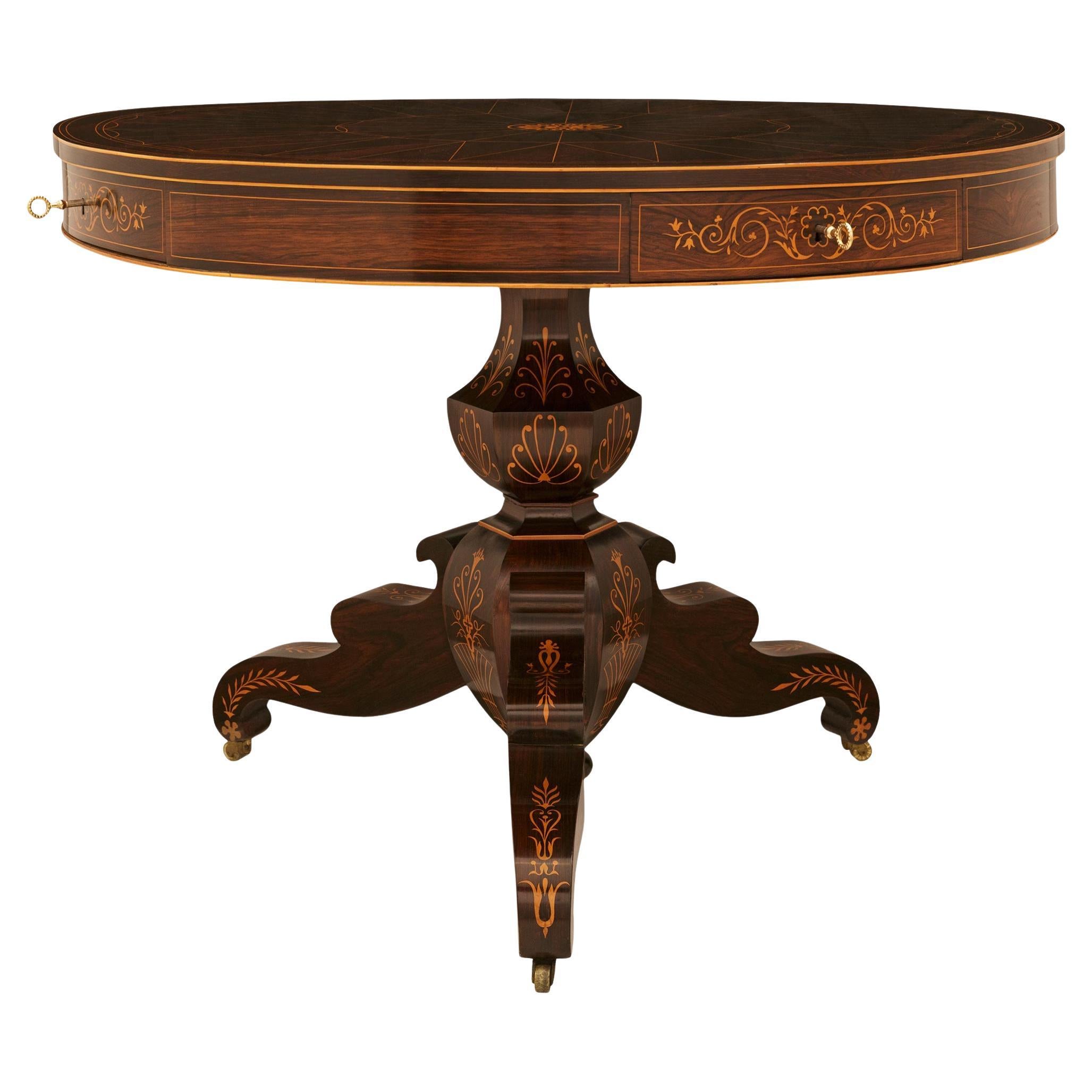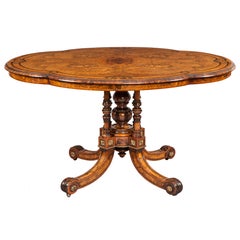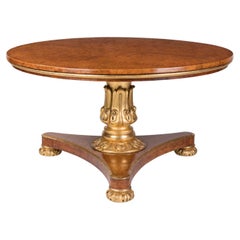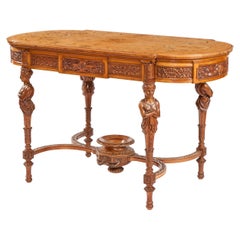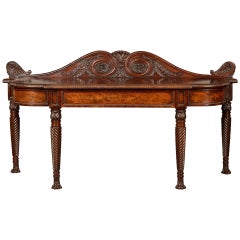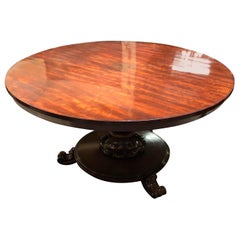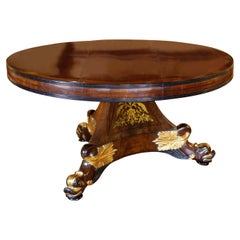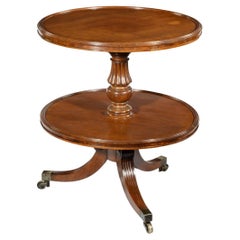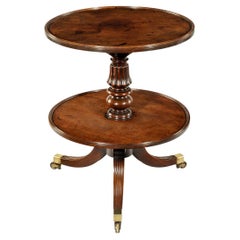Items Similar to 19th Century William IV Period Mahogany Centre Table Attributed to Gillows
Want more images or videos?
Request additional images or videos from the seller
1 of 9
19th Century William IV Period Mahogany Centre Table Attributed to Gillows
$60,780.21
£45,000
€52,412.54
CA$85,016.32
A$93,035.66
CHF 48,792.96
MX$1,111,973.97
NOK 615,764.32
SEK 574,433.78
DKK 391,424.56
About the Item
A William IV Period Mahogany Centre Table
Attributed to Gillows
Constructed from a flamed Honduras Mahogany, book-matched with great effect on the top; the table supported on an incurved tripartite base with confident carved details including the scrolled acanthus feet and further carving of shells and foliate scrolls along the pillar; the circular top with a double-register carved edge. On hidden castors.
English, circa 1830
Dimensions: H: 30 in / 76 cm Dia: 54 in / 137 cm
The founder of the Gillows dynasty, Robert (1704-1772) rose from humble beginnings as a provincial joiner, and evolved into a consummate businessman following a pursuit of excellence throughout his life. Founding his business in 1730 he expanded his furniture making activities to include the direct import of quality West Indian timbers especially the finest mahogany.
His talents as both a cabinetmaker as well as innovative designer brought him early success, and, bringing his two sons, Richard & Robert, into the business, he expanded his Lancaster showroom, to include another in London’s Oxford Street. The clientele now included the Government, the aristocracy and the burgeoning middle classes. His furniture had gained its’ reputation for excellence of workmanship, and materials employed, and coupled with his insistence on being at the cutting edge of design kept the company to the fore throughout its’ one hundred and seventy year history from 1730 until its’ amalgamation with Messrs S.J. Waring in 1900.
Throughout this period it was the largest manufactory of furniture in England. The fortuitous survival of the Gillows records in their Estimate Sketch Books show over 20,000 designs and are preserved in the City of Westminster Library. Furniture made by Gillows is to be found in Royal collections and museums throughout the world. The recent publication of Susan E. Stuart’s scholarly and invaluable study on the company, published by the Antique Collectors Club is a masterpiece of its’ type, and a wonderful exegesis of the company.
- Attributed to:Gillows of Lancaster & London (Cabinetmaker)
- Dimensions:Height: 30 in (76.2 cm)Diameter: 54 in (137.16 cm)
- Style:William IV (Of the Period)
- Materials and Techniques:
- Place of Origin:
- Period:
- Date of Manufacture:circa 1830
- Condition:Wear consistent with age and use.
- Seller Location:London, GB
- Reference Number:Seller: 98681stDibs: LU954743100212
About the Seller
5.0
Recognized Seller
These prestigious sellers are industry leaders and represent the highest echelon for item quality and design.
Established in 1964
1stDibs seller since 2012
54 sales on 1stDibs
Typical response time: <1 hour
Associations
The British Antique Dealers' AssociationLAPADA - The Association of Arts & Antiques Dealers
- ShippingRetrieving quote...Shipping from: London, United Kingdom
- Return Policy
More From This Seller
View All19th Century Shaped Centre Table with Inlay and Gilt Metal by Gillows
By Gillows of Lancaster & London
Located in London, GB
An Antique Shaped Centre Table by Gillows
Constructed in Circassian walnut, with specimen woods inlays, and gilt metal adornments; rising from a castor sho...
Category
Antique 19th Century British Victorian Center Tables
Materials
Metal
English William IV Period Burr Elm Parcel-Gilt Centre Table Attributed to Seddon
By Thomas & George Seddon
Located in London, GB
A William IV Period Parcel Gilt Burr Elm Centre Table
Attributed to Thomas & George Seddon
The circular table veneered throughout with finely figured burr elm and relieved with parc...
Category
Antique 19th Century English William IV Center Tables
Materials
Elm
English Satinwood and Marquetry Centre Table by James Plucknett of Warwick
Located in London, GB
A fine Marquetry centre table by James Plucknett of Warwick
Of rectangular bow ended form, constructed in satinwood, and inlaid with specimen wood marquetry work on the platform; rising from toupie feet, the four finely carved caryatid female supports have a conjoined stylised 'X' form stretcher with a dished bowl at the centre; the apron housing a series of foliate carved entablatures, and the platform extensively inlaid with neoclassical designs of trophies, and floral arabesques. Bearing a label underneath the platform with the makers' name,
circa 1890.
James Plucknett, having had various partners in his company, operated as a sole trader from 1886-1905, the year of his death. He advertised his work as 'manufacturers of rich carved furniture', trading as 'James Plucknett & Co Art Furniture Manufacturers'. His commissions included The Royal Pavilion for the Royal Warwick...
Category
Antique 19th Century English Victorian Center Tables
Materials
Wood, Satinwood
Regency Period Carved Mahogany Serving Table
Located in London, GB
A very fine Georgian serving table of the Regency Period
Constructed in a Cuban mahogany having richly marked veneers and possessing a deep colour and patination; rising from ‘ha...
Category
Antique 19th Century English Regency Serving Tables
Materials
Mahogany
19th Century English Walnut and Ormolu Mounted Centre Table
By Holland & Sons
Located in London, GB
A very fine and substantial centre table in the Louis XVI in the Manner of Holland & Sons
Of exceptional quality, utilising beautifully grained woods, including Circassian walnut,...
Category
Antique Mid-19th Century British Louis XVI Center Tables
Materials
Ormolu
Rare 19th Century English Mahogany Extending Dining Table by Wilkinson & Sons
By Thomas Wilkinson & Sons
Located in London, GB
A rare patent extending dining table constructed from fine Cuban mahogany, when closed the table serves as an end-support table showcasing the handsome lotus-leaf carved and tapering...
Category
Antique 19th Century English Dining Room Tables
Materials
Mahogany
You May Also Like
19th Century English William IV Mahogany Table
Located in Richmond, VA
Great 19th century English mahogany table on a pedestal base with three carved feet.
At 54" this table is great for a breakfast...
Category
Antique 19th Century English William IV Center Tables
Materials
Rosewood
William IV Mahogany and Gilt Center Table
Located in Woodbury, CT
George IV mahogany center table with ebony banding and reeded edge. Parcel gilt foliate design on triform base resting on carved feet featuring gilt and ebonzied dolphins.
Category
Antique Early 19th Century English William IV Center Tables
Materials
Ebony, Mahogany
William IV Two Tier Mahogany Table Attribruted to Gillows
By Gillows of Lancaster & London
Located in Lymington, Hampshire
A William IV two tier mahogany table attribruted to Gillows, with two circular shelves, the top one with a dished edge, supported on a reeded and turn...
Category
Antique 1830s English William IV Serving Tables
Materials
Mahogany
William IV Two Tier Mahogany Table Attribruted to Gillows
By Gillows of Lancaster & London
Located in Lymington, Hampshire
A William IV two tier mahogany table attribruted to Gillows, with two circular shelves, the top one with a dished edge, supported on a reeded and...
Category
Antique 1830s English William IV Tables
Materials
Mahogany
William IV Mahogany Center Table
Located in Essex, MA
Circular with conforming apron. Shaped octagonal tapered support ending on a tripartite base with scroll feet.
Category
Antique 1820s English William IV Center Tables
Materials
Mahogany
French 19th century Charles X Period Mahogany, Rosewood and Maple center table
Located in West Palm Beach, FL
A high quality and most handsome French 19th century Charles X Period Mahogany, Rosewood, Maple and Brass center table. This most decorative table is supported on a tripod base with ...
Category
Antique 19th Century French Charles X Center Tables
Materials
Brass
More Ways To Browse
Honduran Mahogany
Honduras Mahogany
Black Lacquer End Table
Cast Table Leg
Coat Of Arms Wall
Concrete Table Top
Danish Modern Tray Table
Dovetail Table
Dutch Oak Table
Frederick Ii
French Art Nouveau Posters
French Dressing Mirror
French Iron Bistro Table
Henry Iv
Italian Donkeys
Italy Donkey
Josef Hoffmann Glasses
Leather Elephant
